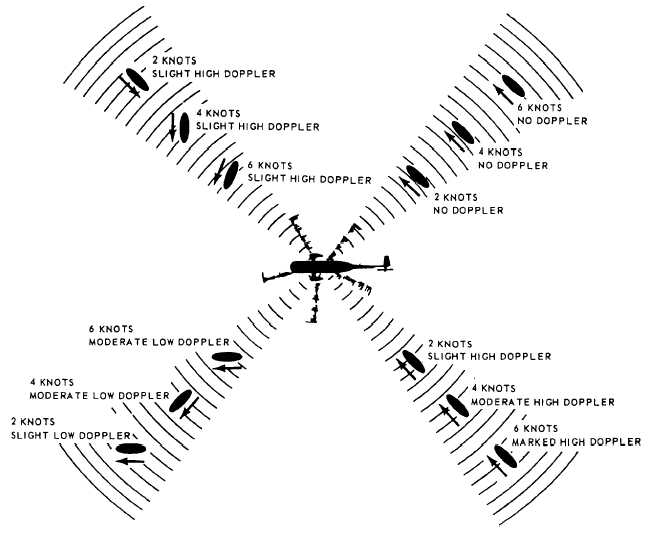The submarine reflects an echo of higher pitch
than that caused by the particles in the water, which
are not moving. When the echo from the oncoming
submarine is higher in frequency than the echoes from
the reverberations, the Doppler is high. The opposite
form of Doppler shift will occur when the submarine
is heading away from the transducer. In this case, the
pitch of the echo is lower than the pitch of the
reverberations. (See figure 4-10.)
The degree of Doppler indicates how rapidly the
submarine is moving relative to the transducer. For
example, a submarine moving directly toward the
transducer at 6 knots returns an echo of higher
frequency than one moving at only 2 knots. Also, a
submarine moving at 6 knots directly at the transducer
returns an echo of higher frequency than one moving
only slightly at the transducer. Refer to figure 4-11.
This figure shows 12 submarines traveling at various
speeds and courses with respect to a stationary
transducer supported by the helicopter. Notice how
the Doppler of each submarine is influenced by its
speed and direction.
Doppler also makes it possible to distinguish the
difference between a wake echo and a submarine
echo. Relatively speaking, the submarine’s wake is
stationary. Therefore, its wake returns an echo with a
frequency different from that of the Doppler shifted
submarine echo.
AIRBORNE SONAR SYSTEM
Learning Objective: Recognize components
and operating principles of an airborne
sonar system.
Figure 4-11-Varying degrees of Doppler effect due to differences in course and speed of submarines.
4-9

